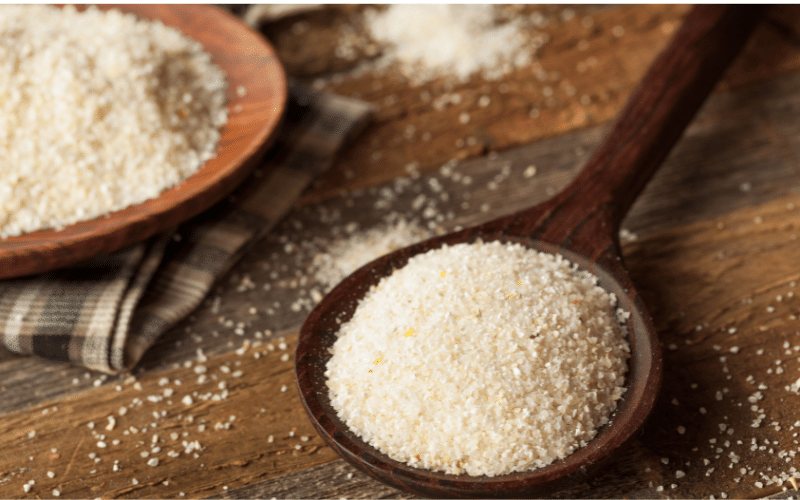Table of Contents

Grits are a type of cornmeal that can be served as breakfast food, used in soups and stews, or eaten with cheese, but are grits gluten free?
They are often made from whole grains. You may have heard that grits contain gluten but is this true?
Here we will discuss the things you need to know about grits and whether they contain gluten or not.
Which grains does not contain gluten?
Barley
Sorghum
Quinoa
Oats
Buckwheat
Amaranth
Teff
Corn
Brown Rice
Are Quinoa and Millet Grits?
Quinoa and Millet are both considered to be gluten-free, but they’re not exactly the same. Quinoa has been certified by the FDA as gluten-free, but Millet, which has a similar, leafier texture to Quinoa, is not. As a result, the two grains can be called grits in many circumstances.
Are “Iced Quinoa and Millet Grits” Safe for People with Celiac Disease?
Yes! Just like regular grits, these are safe for people with celiac disease or non-celiac gluten sensitivity.
If you want to be sure that you have truly gluten-free grits, you should buy from a company that doesn’t use gluten-containing ingredients. You can read more about this here.
Grits to Avoid
There are a number of popular brands of grits that are not safe for those with celiac disease. The brands listed below contain beta-glucan, a gluten protein.
- Chipotle Cheddar
- Schweddy’s
- Wonka’s
- Cochon
- Tesoro
- Check the label, since some varieties of grits can contain both corn and wheat.
- Other Grits
If you can’t tolerate gluten, you can also use grits made from sorghum, millet, brown rice, amaranth or farro.
Some brands, such as Quaker’s Instant, are even gluten-free! These other grains will cook at a much lower temperature and may be safe for celiacs to eat.
Unsafe Corn Grits
You’ll need to be careful with these products, as they may contain gluten. To be safe, make sure the label clearly lists the ingredients.
Serving Grits
If you are a member of the gluten-free community, you can serve grits in any of the following ways:
Add them to your breakfast or lunch routine: Dipping grits into your smoothie, on top of eggs, in a soup, in a casserole, or topped with cheese on a pizza. Stir your oatmeal or grits with milk and fruit in the morning.
Serve grits to your guests who don’t have to adhere to a gluten-free diet. Make gluten-free muffins by substituting regular flour for gluten-free flour.
Substitute non-dairy milk for cow’s milk. Replace fat-free or low-fat cheese and sour cream with all-dairy or dairy-free substitutes (or with applesauce).
If you have a healthy palate, you may enjoy grits with a creamy sauce. You can also bake grits and add them to a warm pasta salad to add texture and flavor.
Does Quaker Grits have wheat?
A search on the Quaker website reveals no products labeled “gluten free” or “gluten-free-safe.” A search on Amazon.com for “Quaker Food Processors Everyday Grits” shows that this is true for the 13 oz. cans, but not for the 16 oz. cans.
Quaker brands Quaker Blueberry and Quaker Pure, Whole Grain, Whole Wheat, Low Fodmap, and Low Fodmap Instant Grits are all listed as gluten-free on the Quaker food processing website.
However, when I looked at the labels of these products on Amazon.com, all of them say they are gluten-free.
Are Grits Gluten Free? Why I’d Avoid Grits
On the basis of available information, I wouldn’t recommend grits for someone with celiac disease or who has non-celiac gluten sensitivity.
I think the risk of accidental gluten contamination is higher than the nutritional benefits. That’s not to say that you can’t eat grits, but if you do, make sure you’re 100% certain that they’re gluten-free.
Another issue is that grits are usually cooked in the same pots as other, non-gluten free foods, so cross contamination can be a problem.

